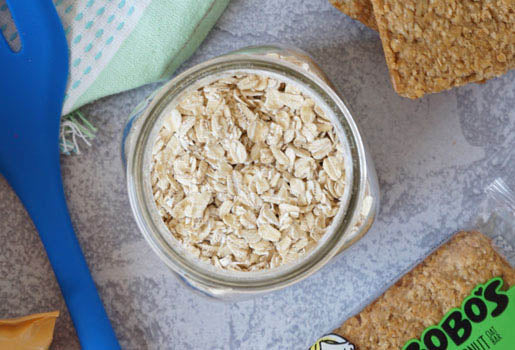|
|
Size:
|
Remove
Remove Item
|
||

What Does Certified Gluten-Free Mean?
Here at Bobo’s we make sure that our bars and bites are all certified gluten-free, meaning only gluten-free ingredients are used during baking. And because we still use the same small-batch baking methods as we did when Bobo’s opened, we can guarantee avoidance of any cross-contamination with gluten-containing items.
This also means we have earned a certified gluten-free logo and label on all our products—giving our customers confidence that Bobo’s bars, bites and toaster pastries contain only gluten-free ingredients.
What is certified gluten-free?
A certified gluten-free label or logo means that the product meets the FDA requirements that represent a gluten-free food, where there is no element of cross-contamination with gluten-containing foods during manufacturing. The GFCO (Gluten-Free Certification Organization) will also provide a certification after an application and validation process.
The label, which is the GFCO Gluten-Free Certification badge, displays that the product is gluten-free. As long as there are fewer than 10 parts per million of gluten, you can say that the product is gluten-free and safe to consume for those with gluten sensitivities or celiac disease. Basically, 10 parts per million of gluten is so incredibly small that it’s insignificant and shouldn’t cause any health concerns or scare.
Gluten-free grains happen to be tasty, and they are now just as commonly found as gluten grains. Gluten-containing grains include wheat, barley and rye, whereas gluten-free grains include quinoa, amaranth, brown rice, and oats, in their natural state.
Sometimes oats might have gluten, such as in oatmeal or granola packaged goods. You always need to check products for the certified gluten-free label if you are unsure if the whole product is gluten-free and safe prior to eating—if there is no label or logo, try one of our best-selling Bobo’s bars instead.
We have the certification on all of our Bobo’s products in order to stand out to our customers and show that we take gluten allergies seriously. We want to take the detective work out of it, where you don’t need to decode labels and check for safe, certified gluten-free products, but rather see the logo and know you’ve found a solid option.
What are the benefits of gluten-free ingredients?
The major benefit to eating gluten-free ingredients is keeping your body safe if you suffer from celiac disease or find trouble with digestion after eating certain foods containing gluten. Beyond that, it’s a matter of preference. Gluten-free grains tend to be high in fiber and protein, which can be a nice bonus for a healthy diet. And gluten-free grains might be easier on your digestive tract based on your body’s system.
How do you know a food is gluten-free?
Naturally gluten-free foods include fresh produce (fruits and veggies), beans and legumes, as well as gluten-free grains and oats in their natural states; however, these can all gain traces of gluten during processing if made into a packaged good.
Think: sweet glazes, creamy sauces, other grains to create an oatmeal mix, and more. When there’s flavoring, there can be gluten. Consider almonds. Raw, unprocessed almonds are gluten-free, but wasabi roasted almonds will likely have gluten due to the wasabi flavored coating. Of course though, check the label for that gluten-free certification before ruling it out.
